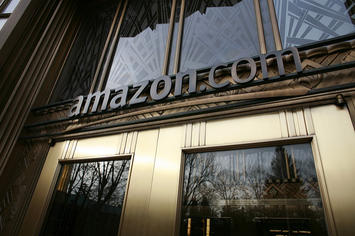
Amazon, obviously embarrassed at the way their HQ2 process has been received, leaked the results of the competition the night before Election Day, ensuring coverage will be largely muted.
Amazon has reportedly decided to split HQ2 between two locations, New York City (Long Island City, Queens) and Washington (Crystal City, VA).
I will have more analysis over the next several days, but this shows that the superstar effect is alive and well. Amazon chose not one but two elite coastal cities for its new headquarters.
There’s no other way to slice it: Amazon repudiated the heartland with this decision. This was probably the ideal case for a heartland choice. It was not just a small executive headquarters but a gigantic number of employees. And Amazon, having lower margins than say Google, has to be much more cost conscious. My own analysis turned on the question of whether or not Amazon would be concerned about costs. I thought they would be, but it turns out they didn’t care. No matter what subsides Amazon extracts from New York and Virginia, they certainly won’t offset the labor cost differentials in those locations.
A friend of mine who works at Google several months ago predicted NYC, saying he thought that Amazon was looking for the “upgrade HQ.” It will be interesting to see if the center of gravity in the company tilts away from Seattle. And where Bezos himself spends most of his time. Another correct prognosticator was Joe Cortright, who predicted Amazon would pick multiple cities so they could retain leverage over time to keep extracting more subsidies.
This choice is a profound challenge to much of America, and particularly to red state philosophies of economic growth. At the high end of the economy, where the most value is being generated and where much of the future of the country is determined, the critical factor is ability to hire top 1% type talent. These companies need the best of the best. And that talent is located disproportionately in the coastal elite cities.
As one person tweeted, “A friend is the founder of a fintech company. They want to hire more college graduates to their Austin office instead of NYC. New talented recruits have multiple offers & most want to be in NYC, not Austin. Austin isn’t exactly a horrible place to live.”
At this level, cost is essentially irrelevant at present. The ability to attract A+ caliber talent is all.
That’s not to say heartland places can’t be successful in many ways. But it won’t be at the elite tiers of the economy.
The Biggest Loser
The biggest loser in this is Chicago. Chicago had the urban location, transit, a great pipeline of talent from the Big Ten, and lower costs. That’s why I picked Chicago as the favorite in my analysis. It checked every box at some level and had lower costs than the coasts to boot.
It didn’t matter. Real estate magnate Sam Zell attributed this to the city and state’s political and fiscal problems, saying, “On a pure competitive basis, Chicago is far and away the No. 1 place that Amazon should pick for their second headquarters—major international airport, major universities, talent, etc.—and yet if I were Amazon, that’d be the last place I’d consider because you’re taking on, excuse the expression, pre-existing conditions.”
This could well be true. Undoubtedly these items are a huge boat anchor on the city, no matter what local boosters might say.
But the talent issue shouldn’t be overlooked. Having lived in both Chicago and New York I can tell you that the caliber of talent is as different as night and day. Chicago has a ton of solid Big Ten type recruits. They are drawing the top 10-20% type people. But Chicago is very weak in top 1-2% types, and that’s a huge handicap when you are trying to position yourself as an elite player. You can’t do it without elite talent, and Chicago doesn’t have nearly enough of it. I wouldn’t be surprised if this were the key factor for Amazon.
Dallas and Atlanta were the other heartland places that could have handled the job influx. But they can console themselves by saying that they weren’t urban enough. The Columbuses and Indys of the world can feel good just to be included on the final 20 list.
But regardless of where you are, this is a big negative indicator for heartland competitiveness at the high end of the economy across the board.
This piece originally appeared on Urbanophile.
Aaron M. Renn is a senior fellow at the Manhattan Institute, a contributing editor of City Journal, and an economic development columnist for Governing magazine. He focuses on ways to help America’s cities thrive in an ever more complex, competitive, globalized, and diverse twenty-first century. During Renn’s 15-year career in management and technology consulting, he was a partner at Accenture and held several technology strategy roles and directed multimillion-dollar global technology implementations. He has contributed to The Guardian, Forbes.com, and numerous other publications. Renn holds a B.S. from Indiana University, where he coauthored an early social-networking platform in 1991.
Photo Credit: Rober Scoble, CC BY 2.0












